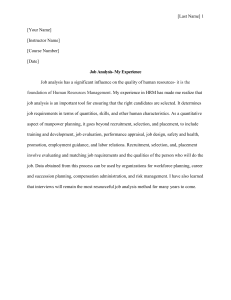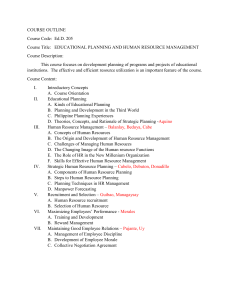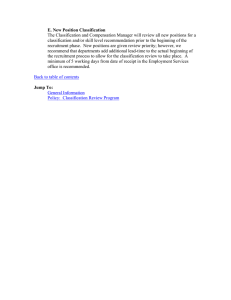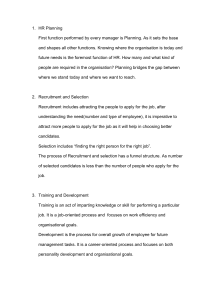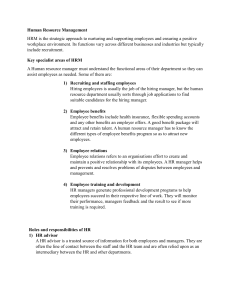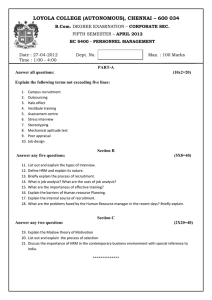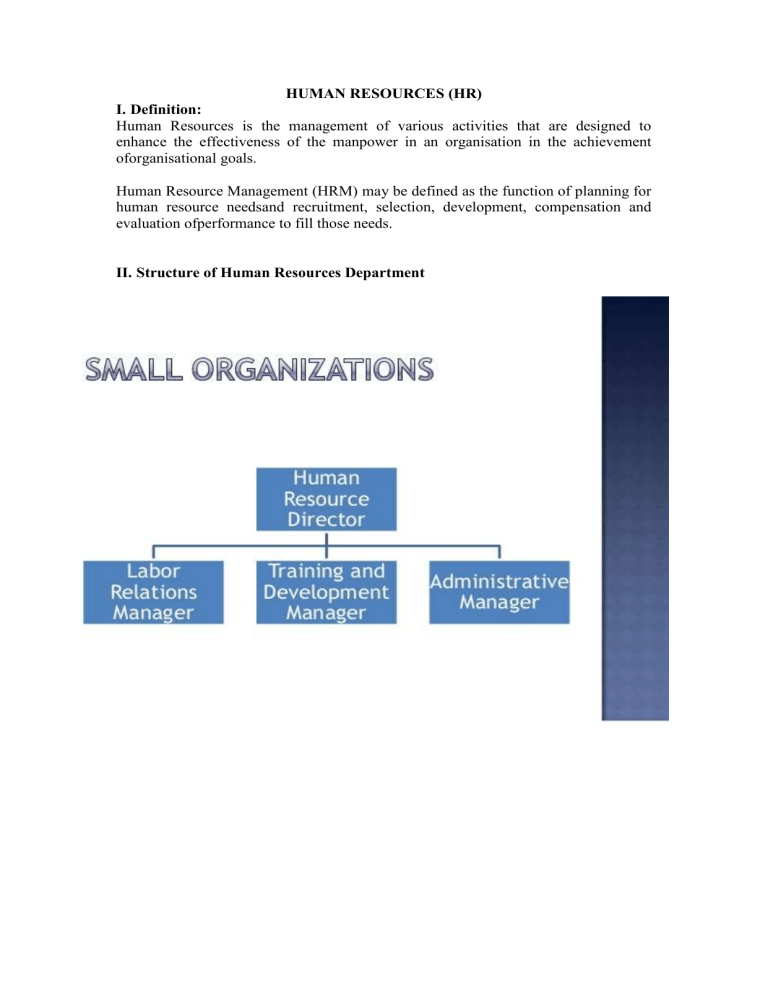
HUMAN RESOURCES (HR) I. Definition: Human Resources is the management of various activities that are designed to enhance the effectiveness of the manpower in an organisation in the achievement oforganisational goals. Human Resource Management (HRM) may be defined as the function of planning for human resource needsand recruitment, selection, development, compensation and evaluation ofperformance to fill those needs. II. Structure of Human Resources Department III. Proccess Human Resource Planning is the process of determining future human resource needs relative to an organisation’s strategic plan and devising the steps necessary to meet those needs. Parts of HRM 1. Forecasting Manpower Demand putting right number of people, right kind of people at the right place, right time, doing the right things for which they are suited for the achievement of goals of the organization 2. Forecasting Manpower Supply Key to managerial functions Efficient Motivation Better human relations Higher productivity 3. Human Resource Actions Staffing is defined as filling and keeping filled, positions in the organisation. Take into account internal factors of the firm such as Personnel Policies, Climate in organisation, Appraisal System. Eg: with changes in technology need for hiring workers who can work with high technology demands. A. Recruitment is the process of identifying and attempting to attract candidates who are To attract those applicants Effective selection depends on effective recruitment. Sources of Recruitment Internal Recruitment External Recruitment Emp Referrals by Current Employees B. Selection: 1. Preliminary screening 2. Application blank 3. Selection tests: Intelligence tests, personality tests, knowledge tests, performance tests. 4. Comprehension tests: Structured, Semi-structured, Unstructured 5. Reference check: Mail, Phone, Person 6. Physical examination 7. Making the final decision C. Socialization: Process of adaption by new employee 1. Initial Socialization: occurs during recruitment, selection, and during introductory training efforts by firm. 2. Extended Socialization: aims at making recruit feel that he or she is an integral part of the company. Salary, wages, allowances be legal be motivation be adequate be equitable be security be effective
